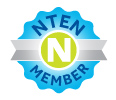I read this fine post on the Costs of CRM Implementation by an NPower consultant, Anand Sethupathy, and I started to wonder why we in the NTAP (Nonprofit Technology Assistance Provider) community are drawn up-market like regular commercial consulting firms. The costs of CRM implementation were more about organizations with 20 seats rather than organizations with 2 seats.
To define terms, I look at the charity sector like this:
- 80.8% of registered nonprofits have budgets under $100K per year
- 50.9% 990 filers have budgets under $100K
Long agi there was Techrocks and Ebase. In 2002, I was at a retreat in Montana where we mapped out the move from Ebase 1 to Ebase 2. Ebase 1 was in the "simple to use" category. Ebase 2 became more flexible and powerful because Ebase users and consultants needed more. Eric Leland reviewed Ebase 2 back then this way:
While ebase 2.0 is a great improvement, it should still not be considered a “ready-to-use”product. Any users considering ebase should carefully evaluate what ebase can do for their organization without any extra work configuring the product, and what ebase can do for them if they are able to configure it.A perfect example of a solution moving up-market from v1 to v2... getting used by larger organizations with more complex needs and losing its footing in the grassroots.
IMHO, Npower, Salesforce and ONE/Northwest have seen a march up-market among charities as well.
The only groups I can think of that keep a tight focus on the smallest organizations are Mission Research and the Organizers Database (I'm sure there are others, but those come to mind).
What is the determining factor?
As soon as you have a human providing services to charities, you are forced to move up market. Consulting is expensive and only charities with bigger budgets can afford them.
If you focus on a product that "just works" without the consulting component, you don't have to move up market (you also probably aren't going to make any money either).
The hard part is building the ecology that can deliver the entry level product (Giftworks / ODB /Ebase 1) AND provide enough flexibility and tools to allow the consultants to do what they do as well.

